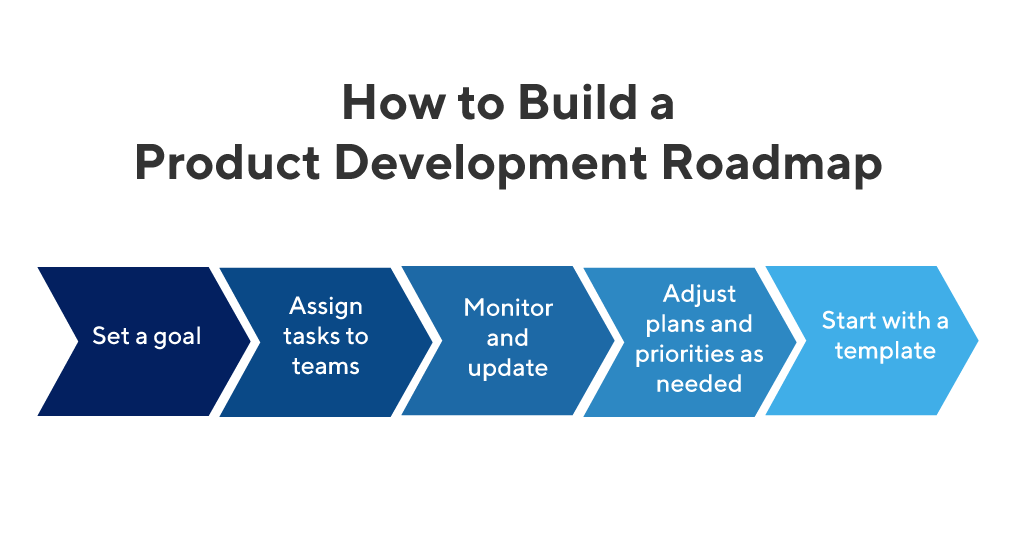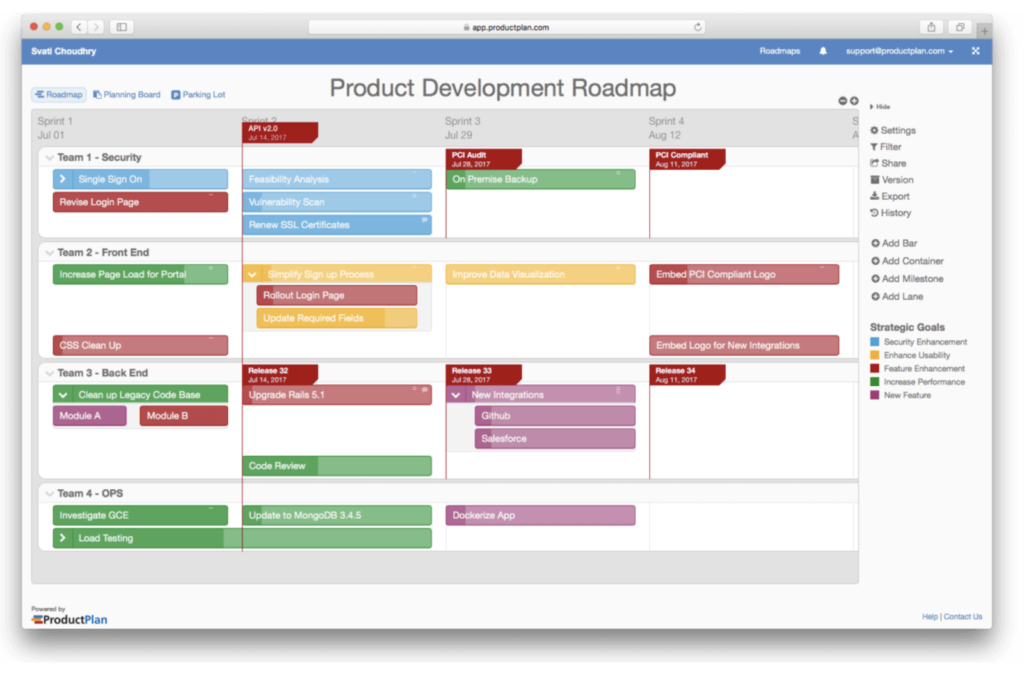What is Product Development?
Product development refers to all of the work involved in taking a product from concept to the market.
The term does not just refer to the developers who build or code the product. Product development is a broad effort that involves many teams across a company: marketing, design, development, QA, sales, etc. In contrast, product management drives this effort from a strategic standpoint.
What Does the Product Development Process Look Like?
There are several frameworks available to help businesses structure their product development process.
One popular example is the design thinking framework. Another is the fuzzy front end (FFE) approach. This framework identifies the broad stages of development but offers flexibility in how an organization arranges and prioritizes these steps. As TechTarget explains, the five elements of the FFE approach are:
1. Identify design criteria: Brainstorming new product ideas.
2. Idea analysis: Using market data and other types of research to evaluate the viability of a product idea.
3. Concept genesis: Turning a product opportunity, the team agrees on viability into a tangled concept.
4. Rapid prototyping: Developing a simulated or “quick-and-dirty” model of the product for early user feedback. Learn more about rapid prototyping.
5. Product development: Gathering evidence of viability, making the business case, then beginning development.
Why Roadmaps Are Important for Product Development
Product development is a complex process. It encompasses many steps, involves several groups across the organization, and contains interdependencies among these groups. Also, the cross-functional team must frequently check on its progress to make sure they are continuing to execute according to plan. Product development requires continuous communication.
For these reasons, organizations should maintain a product development roadmap as a centralized resource to track and refer to everyone’s strategic role. A product development roadmap is an overview of the planned work and milestones involved in bringing a product to market.
Product Development Roadmap vs. Product Roadmap
The product development roadmap should not be confused with the product roadmap. Both are designed to communicate an organization’s strategic thinking and planning for its product. But the two are separate tools, each focusing on a different aspect of the product’s strategy.
A product development roadmap is designed to track and communicate a product’s development initiatives and milestones. It covers a shorter time frame, only a couple of months, and agile organizations arrange it in sprints.
Whereas, a product roadmap is designed to map out a product’s strategic vision and priorities over time. It highlights the product’s major themes, and, according to research we gathered for ProductPlan’s 2019 Product Planning Report, most organizations’ product roadmaps cover a timeframe of four to twelve months.
A product roadmap focuses on major strategic milestones and sometimes doesn’t include dates. In contrast, product development roadmaps are data-driven and focus on deadlines and release schedules.
Download The Product Roadmap Strategy Playbook ➜
How to Build a Product Development Roadmap

1. Set a clearly defined goal for your product’s development.
The product development roadmap should not be simply a task list. Each item on the roadmap must serve a strategic purpose for the product’s overall success.
Before adding items to your roadmap, you and your team need to set a strategic goal for the roadmap. Then you can gauge each item that you want to add afterward according to whether or not it contributes strategically to that goal.
2. Agree on which teams and individuals own which tasks.
A roadmap doesn’t help your team’s product development unless every item on it has a clear owner. Therefore, that owner has taken responsibility for completing the task in the agreed timeframe.
3. Monitor the roadmap frequently and update as needed to stay on course.
Since product development involves many moving parts and interdependencies, you need to revisit your roadmap often to make sure everyone is still on course.

4. Be willing to adjust plans and priorities based on new realities.
No complex initiative goes precisely according to plan from start to finish. You need to be prepared to shift resources or change priorities when realities force you to do so.
For example, if a portion of your marketing resources diverts to a higher-priority project, you need to be willing to adjust to that reality so that you can keep the product’s marketing efforts on track.
5. Start with a product development roadmap template, such as the one below.
Product development roadmaps include many short-term steps and milestones that can change frequently. It’s a good idea to build this blueprint with a tool designed for roadmaps—and not by drafting a static document from scratch.





